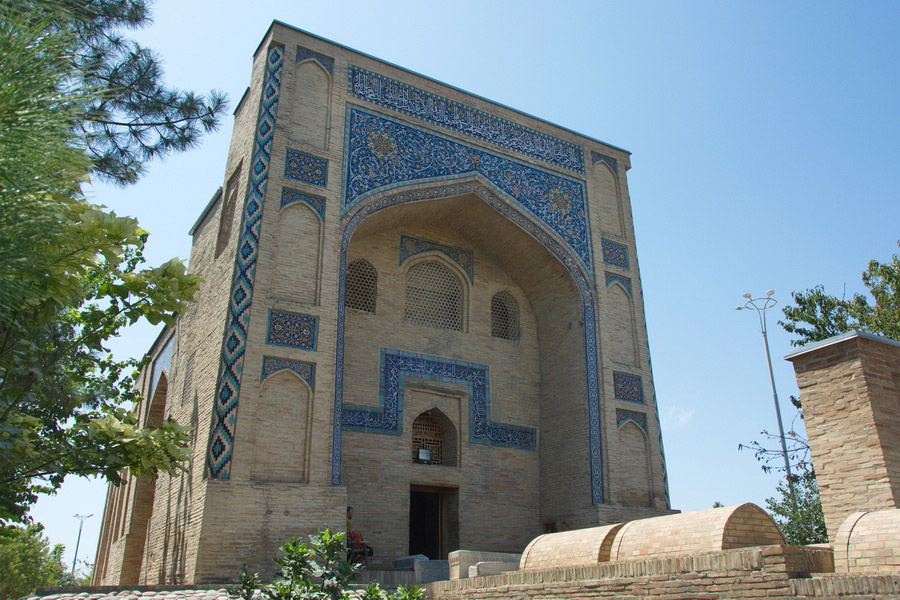
Abu Bakr al-Kaffal al-Shashi: Scholar, Poet, and Patron of Tashkent
I have stripped my home of its carved doors.
It stands open, day and night, to guests.
Come in, sit down, my weary traveler –
All that I have is yours: both bitterness and balm.
Blessed is the one who shares a meal with me,
Even if I offer vinegar instead of sherbet.
He tasted the beans with grateful dignity.
But let the proud man not squander his strength.
More than a thousand years have passed since the life of Abu Bakr Muhammad ibn Ali ibn Ismail Al-Kaffal Al-Kabir al-Shashi. Yet in present-day Tashkent, nearly everyone recognizes the reverent title “Hazrati Imam” (“Holy Imam”) bestowed upon him by the townspeople as far back as the 10th century. Over the centuries, the name has softened in local dialect – first to “Hast-Imam”, and eventually to “Hastim”.
What Is in My Name
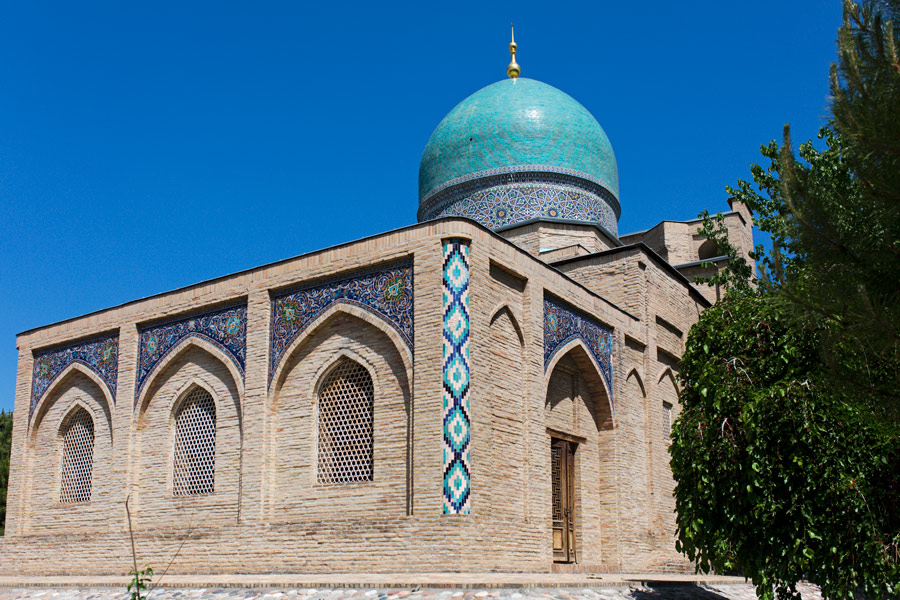
Al-Kaffal al-Shashi was born in the year 291 AH (903/904 AD) in Ash-Shash, the city now known as Tashkent. His lineage was steeped in piety. His grandfather, Ismail, bore the name of the Prophet Ibrahim’s firstborn son, and his father, Ali, was named for the fourth righteous caliph, a close companion of the Prophet Muhammad (peace be upon him). Abu Bakr received the name of the first caliph, Abu Bakr, another revered companion of the Prophet.
A professional title was later added: Kaffal, meaning “locksmith”, a nod to the family’s trade. Derived from the Arabic word kufl, which evolved into kulf in modern Uzbek, the word still retains its original meaning – “lock”. Over time, additional epithets were affixed to his name: ash-Shashi, denoting his origin from Tashkent, and “Hazrati Imam”, a title of spiritual honor.
To distinguish him from another prominent scholar – Al-Kaffal Abu Bakr Abdullah ibn Ahmad al-Marwazi, born in Merv nearly four centuries later – manuscripts began to refer to the Tashkent scholar as “al-Kabir” (“the Elder”), while the Marv scholar was labeled “as-Saghir” (“the Younger”).
What might seem a dauntingly long name is, in fact, a clear reflection of his identity: Abu Bakr Muhammad “the Elder”, son of Ali, grandson of Ismail, a master locksmith from Tashkent – brave poet, polyglot, and prolific author whose works on Muslim law continue to be republished to this day.
A Little About Medieval Tashkent
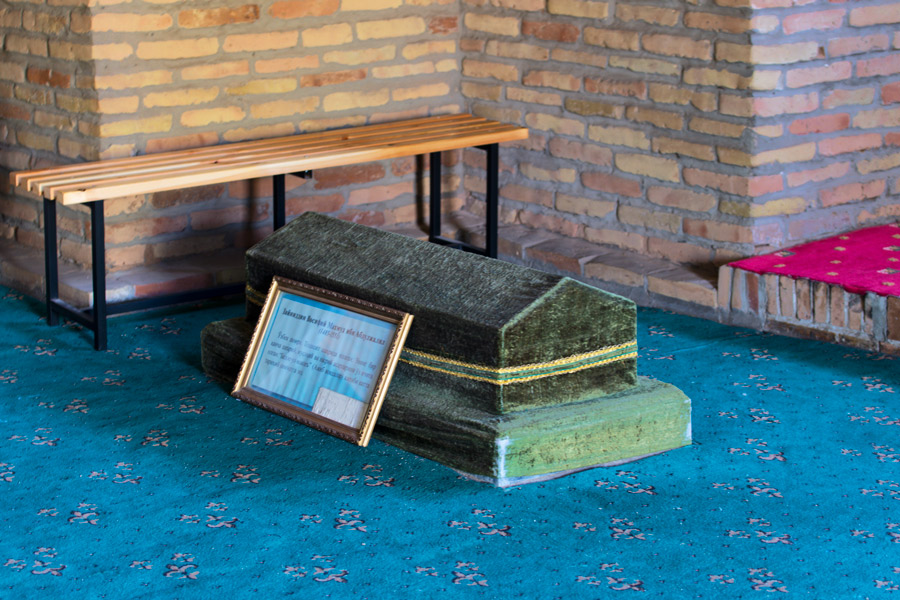
In the 9th century, Tashkent – then known as Shash – became part of the Arab Caliphate. It was during this period that Caliph Muhammad al-Mutawakkil, the youngest son of the legendary Caliph Harun al-Rashid, allocated two million dirhams to the city for irrigation and ordered the construction of a canal. His generosity may have been inspired by familial ties to the region – his grandmother was from Sogdiana. Or perhaps it stemmed from his reliance on Turkic warriors: as a young man, he raised a private force composed entirely of Turks, loyal only to him. After ascending to the caliphate, his successor Mutasim expanded the Turkic contingent to 70,000 troops, among whom were certainly men from Shash.
Thanks to Caliph Mutasim, the Bozsu-Kalkaus irrigation system was improved – a story we will return to at the end.
In the 9th and 10th centuries, Shash occupied the northwestern part of what is now Tashkent. The city center lay in the area bordered by today’s Chorsu, Eski-Zhuva, and Navoi Street. During Kaffal’s youth, Shash experienced a period of economic growth. His family’s locksmith workshop was located here, and it was in this thriving urban environment that he mastered his father’s craft and developed a passion for reading. Like many young people in the East today, he composed his first poems early on.
The Science of the Eastern Renaissance
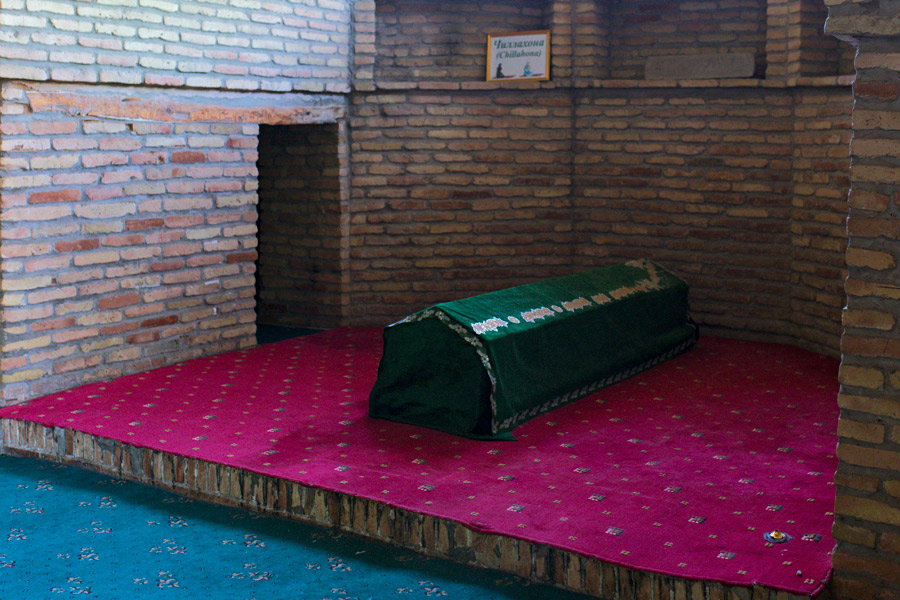
The period from the 9th to the 12th centuries is often called the true Eastern Renaissance – a time when the pursuit of knowledge was revered above all else. In the medieval Islamic world, education was considered a religious obligation and served as a powerful means of social mobility. History abounds with examples of young men from modest backgrounds who, through their studies at madrasahs, rose to become leaders in religious and intellectual life.
In the spirit of the hadith “Seek knowledge from the cradle to the grave”, graduates of madrasahs typically continued their education under the guidance of esteemed scholars. Much like modern academic specialization, students chose particular disciplines: some focused on Arabic grammar, while others delved into Muslim jurisprudence. Their education could span a decade or more, moving from one teacher to another as they refined their understanding.
Abu Bakr Muhammad Kaffal al-Shashi pursued this path of scholarship. After his early education, he traveled to Khorasan and then to Baghdad – the heart of the Islamic intellectual world. He also visited the sacred cities of Mecca and Medina, completing his studies in Damascus. His teachers included prominent scholars such as Imam Abu Bakr Ibn Huzayma and Abu al-Qasim al-Baghawi.
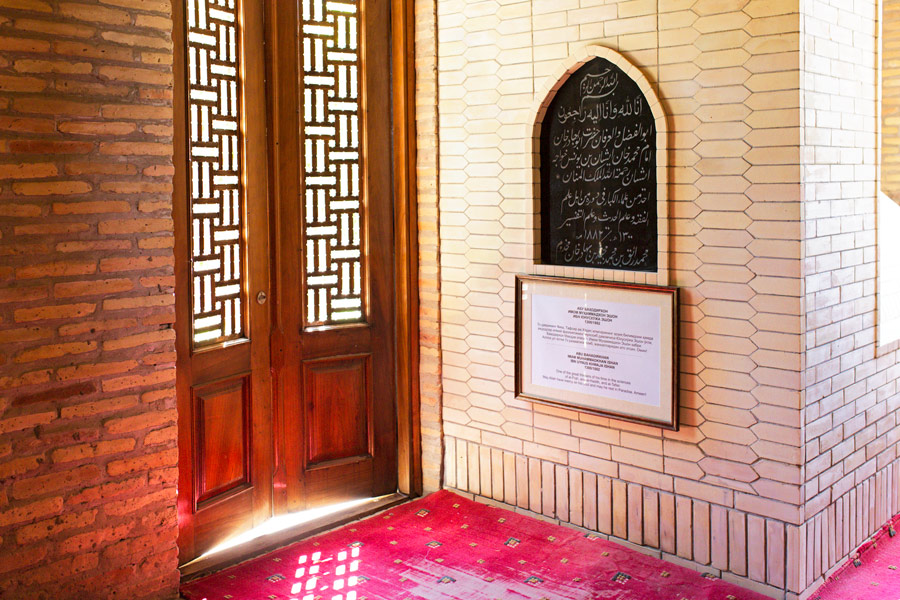
Contemporary sources attest to the rigorous academic training in medieval madrasahs. Theology, jurisprudence, hadith (reports of the Prophet’s sayings and deeds), Quranic interpretation (tafsir), Arabic linguistics, prophetic biography (sira), as well as the exact and applied sciences – all were studied in depth. This sophisticated blend of religious and secular education spread across the Islamic world.
In Baghdad, Al-Kaffal studied under Imam Abu Jafar Muhammad ibn Jarir al-Tabari (839–923), the renowned historian and theologian. Al-Tabari authored History of the Prophets and Kings, a major Quranic tafsir, and legal works. He died in Baghdad when Al-Kaffal was just 19 years old – proof of how young the Tashkent scholar was when he left his home.
Many scholars of the Muslim Renaissance lived at the intersection of spirituality and the arts. Literary expression, especially poetry, often infused sacred texts, and knowledge itself was conveyed in artistic form. It was common for scholars and statesmen to be poets as well – figures such as Abu Ali ibn Sina, Ali Kushchi, Alisher Navoi, Ahmad Yugnaki, Zahiruddin Babur, Mirzo Ulugbek, Omar Khayyam, and Yusuf Has Hajib all wrote poetry alongside their scholarly work.
In this tradition, Tajuddin Abdul Wahhab As-Subbahi wrote of Al-Kaffal al-Shashi: “He composed incredibly skillful poems and songs”.
After years of dedicated study, Abu Bakr al-Kaffal al-Shashi became a leading scholar of the Shafi'i school of Islamic jurisprudence and earned recognition across many scientific fields. His authority in Muslim law – covering rituals, ethics, and social conduct – was widely acknowledged.
Among his disciples were prominent masters of jurisprudence and hadith, including Abu Abdullah al-Hakim, Abu Abdullah ibn Mandah, Hakim Abu Abdullah ibn al-Bayi, the famed Sufi scholar Abu Abdurrahman as-Sulami, jurist Abu Abdullah al-Halimi, Abu Nasr ibn Qatada, Abu al-Qasim Omar ibn Muhammad ibn Ahmad ibn Ikrimah (al-Jazari, also known as Ibn al-Bazri), and Abu al-Qasim Abdurrahman ibn Muhammad ibn Ahmad al-Furani.
The Heyday of Kaffal Shashi
Abu Bakr Muhammad Kaffal al-Shashi, the Tashkent native, was an extraordinary man – an erudite scholar of sacred texts and Islamic jurisprudence, a polyglot fluent in many languages of the medieval East, and the author of multiple works that are still in circulation today. Yet the Eastern Renaissance produced many such figures: scholars, theologians, and prolific writers. So why is it that, more than a thousand years later, professors in Boston and Toronto lecture about him, and his name is quoted in Greece, Lebanon, and Turkey?
In the literary tradition of the time – especially in the Arab world – poetic rivalries (hijā’) often accompanied periods of war and political tension, serving as a psychological weapon. Kaffal al-Shashi earned lasting fame as a masterful polemicist who composed a poetic reply to a provocative challenge sent by Nikiforos, the supreme commander of the Byzantine army.
During the rise of Nikiforos II Phokas (912–969), who later became emperor, Byzantium entered a phase of military expansion, seizing territory from the Arabs. Various historical sources describe a specific incident in the 950s, when a poem was sent from Nikiforos’ camp to the Muslim world. Written in Arabic and filled with anti-Islamic rhetoric, this 71-line polemic reached Baghdad and stirred shock and indignation.
Even by the harsh standards of the era, Nikiforos stood out for his brutality. At 42, he was appointed domesticus (commander-in-chief), second only to the emperor. Contemporary chronicler Leo the Deacon recounts that during his conquest of the Arab city of Handak in 961, Nikiforos ordered the decapitation of thousands, some heads impaled and displayed on spears, others flung into the city with catapults.
The poem from Nikiforos reflected this cruelty. It celebrated Byzantine victories, mocked Muslim rulers, and gloated over the capture of noble Muslim women, referring to them as spoils taken “without contracts or dowries”. The message vowed continued Christian conquest – promising to take Egypt, Arabia, Iraq, Persia, and Yemen, to capture Mecca, and to erase Islam entirely.
But intriguingly, the Byzantine poet did not attribute victory to Christian faith or military valor. Instead, he claimed that Muslim defeats stemmed from moral decline and betrayal of Islamic principles, implying divine punishment.
Nikiforos’ army, known for its strategic acumen, had access to military treatises like On Military Stratagems, which advocated psychological tactics – such as sending spies disguised as envoys with poems and gifts. It is likely that the envoy who delivered the poem to the Muslim army was not just a messenger, but a well-trained agent tasked with sowing demoralization.
The tactic worked. According to contemporary sources, the poem deeply wounded Muslim morale. In Baghdad, no court poet dared to respond – none could match its rhetorical force. The situation was dire: the Byzantine Empire had entered a golden age of military resurgence under Nikiforos.
As recounted by As-Subbahi in Tabakat Ash-Shafiya, Imam Khalimi Abdulmalik, son of Muhammad, reported that among the Muslim troops was a scholar-warrior named Imam Kaffal Muhammad ibn Ismail.
When Nikiforos’ venomous poem reached the Muslim camp, no poet from Khorasan, Syria, or Iraq stepped forward. Only Kaffal – equally adept with the sword and the pen – rose to the challenge. He composed a bold 74-line poetic response and sent it to Constantinople.
News came to me about a man who, in his polemic,
Shows himself to be completely uneducated in the art of words.
He pompously appropriates titles that he does not possess,
And attributes to himself great deeds that he has never accomplished.
He calls himself a pure and good Christian,
Although he commits cruelties worse than any godless man.
In this reply, Kaffal not only stripped Nikiforos of his claim to moral or religious purity, but also accused him of violating the very ideals of Christianity through his cruelty and deceit.
While we show mercy, winning battles and wars for years,
You show inhumanity by winning a single battle in a single day.
In a striking turn, Kaffal even agreed with Nikiforos’ claim that Muslim rulers had brought defeat upon themselves through moral failure. But he interpreted this not as a validation of Christian supremacy, but as proof of divine justice within Islam:
You have won thanks to the unjust actions of our leaders.
Indeed, this is exactly what you said,
And it serves as further proof of the accuracy of our faith:
When we transgress the law of our faith,
Good fortune turns away from us.
As-Subbahi records that later, when Abdulmalik was captured by the Byzantines, court poets in Constantinople quoted Kaffal’s poem back to him. They marveled at its eloquence and asked about the author, astonished that such a refined poet had come from the Muslim world. They repeated verses that celebrated generosity and modesty.
History would chart very different endings for the emperor and the poet.
Nikiforos II Phokas ruled for six years and four months. By the end of his reign, he had alienated the court, the clergy, and the people. According to Leo the Deacon, he was assassinated in a palace conspiracy, and his headless body lay exposed in the snow for an entire day.
Kaffal Shashi, meanwhile, returned to Tashkent, where he lived out his final years in dignity and respect.
I will not lock my doors with bolts,
I am ready to share my food with guests.
I will give my guest everything I have in my house,
Even if it is only vinegar and a handful of beans.
Humbly serving those who are noble in spirit,
I will pass indifferently by fools.
Kaffal Shashi in Medieval Literature and the Memoirs of His Contemporaries
The 13th-century Arab scholar and jurist Ibn Khallikan (Shams ad-Din Abu al-Abbas Ahmad ibn Muhammad ibn Khallikan; 1211–1282) dedicated an entire chapter to our compatriot in his monumental work Wafayat al-A'yan (Necrology of Notable Persons and Notes on Their Contemporaries).
He writes: “Abu Bakr Muhammad ibn Ali ibn Ismail al-Kaffal al-Shashi, a scholar of Shafi'i theology, was without a doubt the foremost expert in law of his time. Kaffal al-Shashi not only possessed a profound knowledge of jurisprudence and tradition but also distinguished himself as a linguist and an exceptional poet. No one in the region of Maverannahr could match him in scholarship. In his quest for knowledge, he traveled from his native Shash to Khorasan, Iraq, the Hijaz, Syria, and the northern reaches of Mesopotamia. His renown spread far and wide”.
Many medieval authors bestowed the highest praise upon al-Kaffal al-Shashi.
- Al-Imam Abu al-Hak al-Shirazi: “He was a great Imam who composed numerous works of lasting value”.
- Al-Khalimi: “Our Sheikh al-Kaffal was the most learned among the scholars of his time whom I have encountered”.
- Ibn al-Salah: “He was one of the most knowledgeable imams of the Shafi'i school, raising its jurisprudence to a new level”.
- Imam an-Nawawi: “Ash-Shashi mastered all disciplines – Quranic exegesis (tafsir), hadith, legal methodology (usul), rational theology (kalam), and the sciences”.
- Hakim Abu Abdullah ibn al-Bayi: “He was the most learned man of his time”.
In his 12th-century geographic encyclopedia Mu'jam al-Buldan, the writer, traveler, and philologist Yaqut al-Hamawi describes Shash as a city located beyond the Amu Darya and Syr Darya rivers. He notes that many prominent scholars hailed from this region. Though the majority of Maverannahr's population followed the Hanafi school of jurisprudence, the Shafi'i school spread there thanks to al-Kaffal al-Shashi.
“In his youth”, writes Yaqut, “he worked as a locksmith. Later, he pursued knowledge and became a renowned scholar and proponent of the Shafi'i madhhab in the region”. Among his known works are Usul al-Fiqh, Mahasin al-Shari'a, and a commentary on the treatise Adab al-Qudat, among others.
Ibn Khallikan adds that al-Kaffal wrote extensively on a range of topics, including a treatise on dialectics (jadal), the foundations of jurisprudence (usul al-fiqh), and legal pledges. He recounts that in the month of Shawwal 665 AH (July 1267) – nearly three centuries after al-Kaffal's death – he saw handwritten copies of the scholar’s works in ten volumes in the Adiliya Madrasa library in Damascus, copied by Sheikh Qutbaddin Masud an-Naysaburi.
The works of Kaffal al-Shashi are still in print today. In 2007, the Beirut-based publishing house Dar al-Kutub al-‘Ilmiyya reissued his legal treatise Mahasin al-Shari'ah fi Furu' al-Shafi'iyyah: Kitab fi Maqasid al-Shari'ah.
Traditions Woven into History
More than a thousand years have passed since his lifetime, and the line between historical fact and popular legend has grown faint. Even eight centuries ago, scholars noted inconsistencies in the chronology of Hazrat Imam’s life. For instance, Sheikh Abu Ishaq al-Shirazi claimed that al-Kaffal died in 336 AH (947–948), but Ibn Khallikan disputes this, arguing that al-Shirazi likely confused him with another scholar from Shash – a city that produced many men of learning.
Among these were:
- Fakhr al-Islam Abu Bakr Muhammad ibn Ahmad ibn Husayn al-Shashi al-Kufi;
- Ahmad ibn Muhammad ibn Ahmad ash-Shashi (son of Fakhr al-Islam);
- Muhammad ibn Ali ibn Hamid ash-Shashi.
One enduring legend claims that the famed Uthman Quran (dating from the 7th century) was brought from Baghdad to Tashkent by al-Kaffal al-Shashi himself, a gift from the Caliph of Baghdad in honor of his service. Another story links his title “Kabir” (“the Elder”) to his poetic reply to the Byzantine emperor.
In Silsilat al-‘Urifin, Sheikh Abu Ahmad Muhammad Ghazi Shashi tells a slightly different version:
...On returning to Baghdad from another pilgrimage to Mecca, Kaffal Shashi found the caliph’s court in turmoil. Nikiforos, the warlike Byzantine emperor, had sent Caliph al-Muti' Lillah a beautifully composed qasida (Arabic poem) with a provocative message: “If you cannot respond with verses of equal quality, then pay tribute – or prepare for war”. None dared to respond. The Byzantine envoy grew impatient. At last, Kaffal Shashi accepted the challenge – but only on the condition that he be granted the Uthman Quran, the oldest known manuscript of the Quran, said to bear the blood of the murdered Caliph Uthman. According to the chronicle, his poem so astonished Nikiforos that the emperor exclaimed: “We did not know such a poet lived among the Muslims!” The caliphate was spared, and the sacred Quran was sent to Tashkent.
Yet this version is likely apocryphal. By that time, the caliphs had long lost political power and functioned as ceremonial figures. The Caliph al-Muti' Lillah (r. 946–974) was a shadow of former Abbasid might, living on a modest allowance of 100 dirhams per day. The only figure with real influence at court was his secretary. Historians widely agree that the Quran attributed to Uthman reached Tashkent under Tamerlane.
Still, none of this diminishes Kaffal Shashi’s remarkable poetic talent, which inspired legends that have endured for over a millennium.
Another tale claims that Kaffal Shashi, who was said to speak seventy-two languages, translated the Torah from Hebrew into Arabic. In gratitude, Jewish leaders freed 10,000 Muslim captives. When asked by the caliph what reward he desired, Kaffal replied: “Give funds to the ruler of my native Shash for the construction of irrigation canals”. The caliph promptly ordered that 160,000 tan'a be allocated, allowing the city to employ workers and build an extensive water network.
The truth of such stories may be uncertain, but their moral is clear: for generations, the people of Tashkent have revered the scholar-saint who did so much for his homeland. And it matters little that modern Uzbek Muslims follow the Hanafi school, while Kaffal Shashi was a scholar of the Shafi'i tradition.
Return to Shash
After years of travel – visiting the Islamic world’s most sacred cities and greatest thinkers – Abu Bakr al-Kaffal al-Shashi returned to his native Tashkent. His reputation had preceded him. No longer the curious son of a master locksmith, he returned as a revered scholar and poet.
Some historians claim that the Karakhanid Turks' conversion to Islam in 960 was influenced by his teachings. If true, this would place his return to Tashkent not in his old age, but in his mid-50s. According to Hakim Ibn al-Bali, the “destroyer of pleasures and separator of gatherings” – that is, death – came to the revered scholar in August 976, at the age of 72.
Remember the Keikaus Canal, improved through Caliph Mutasim’s funding and mentioned earlier in this story? The scholar was laid to rest beside that canal, in a serene garden known as Bogi-Keikaus, near the city wall – built with the same caliphal funds for protection against nomadic raids. He was buried beside an aryk, one of the irrigation channels his legend helped to inspire.
Legacy and Pilgrimage
Centuries passed. Dynasties rose and fell. Tashkent was battered by invasions and earthquakes. Yet the mausoleum of Kaffal al-Shashi was rebuilt each time. In 1541, the Shaybanid rulers honored the scholar by constructing the mausoleum that stands to this day.
For over a thousand years, pilgrims have traveled here to find solace and offer prayers beside his tomb. His story endures – of a scholar, poet, warrior, and polyglot who began life as a humble locksmith and ended as a spiritual cornerstone of his city.
It is regrettable that the 1100th anniversary of his birth, in 2004, passed without notice. These notes serve as a modest tribute for the 1110th anniversary of his birth, celebrated in 2014, and the 1038th anniversary of his death.
The doors of the house are always open to guests.
Food and drink await the weary traveler.
Let the modest offerings of water and beans
Be accepted as a humble gift from fate.
Those who are noble and honest in spirit will understand.
The stingy and unjust will not enter my house.

